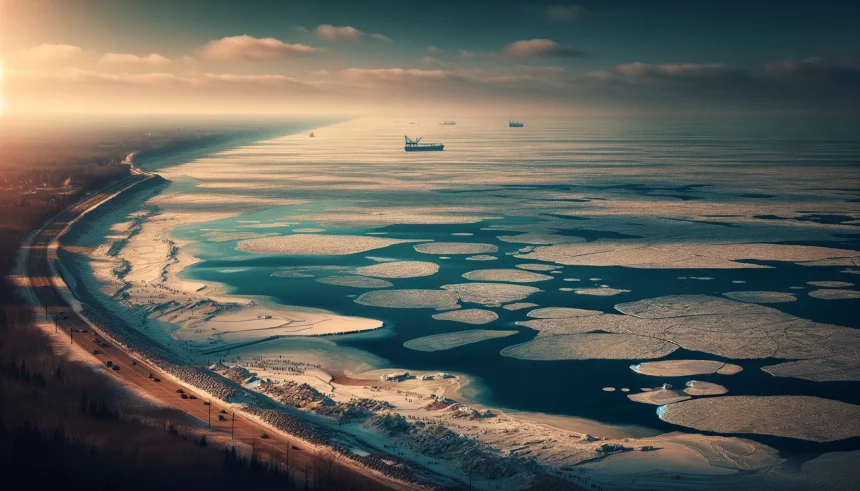Recent observations have revealed a stark decline in ice coverage across the five Great Lakes, with levels dropping to a mere 6% last month, one of the lowest in the past half-century, the National Oceanic and Atmospheric Administration (Noaa) reports.
The sprawling Great Lakes system, which holds over 20% of the world’s freshwater, is witnessing diminishing ice cover due to global heating—a trend that scientists warn could have severe repercussions if not addressed promptly.
“We are observing rapid ice loss and warming summer water temperatures,” highlighted Professor Sapna Sharma from York University, emphasizing the dire forecast that numerous lakes might soon cease to freeze in winter, with a potential permanent loss of ice cover for thousands by the century’s end.
Historically, the Great Lakes have been a stronghold of winter ice, but records have indicated a consistent reduction in ice cover and shorter freezing periods since 1973. James Kessler, a Noaa physical scientist, underscores the significance: “There is a trend: a 5% decline in average ice cover per decade.”
The repercussions of these changes extend beyond simple statistics. The lack of ice leads to more rain instead of snow, affecting the environment and local communities. This shift has been particularly noticeable in Lake Superior’s bays, which have seen a shift from consistent winter freezes to occasional ice-free seasons since the late 90s.
“The Great Lakes are now experiencing much lower ice cover, but in many regions, no ice at all,” Sharma stated, pointing to the possibility of certain areas losing ice cover permanently by the 2060s if greenhouse gas emissions continue unabated.
The environmental impact of reduced ice is profound, affecting evaporation rates, water temperatures, and oxygen levels. These changes threaten the survival of native fish species and disrupt the entire ecosystem. Additionally, lower ice levels impact human activities, from cultural traditions and tourism to the operational costs of commercial shipping.
The situation serves as a clear call to action to address the root causes of climate change and mitigate its effects on the Great Lakes and beyond.
















